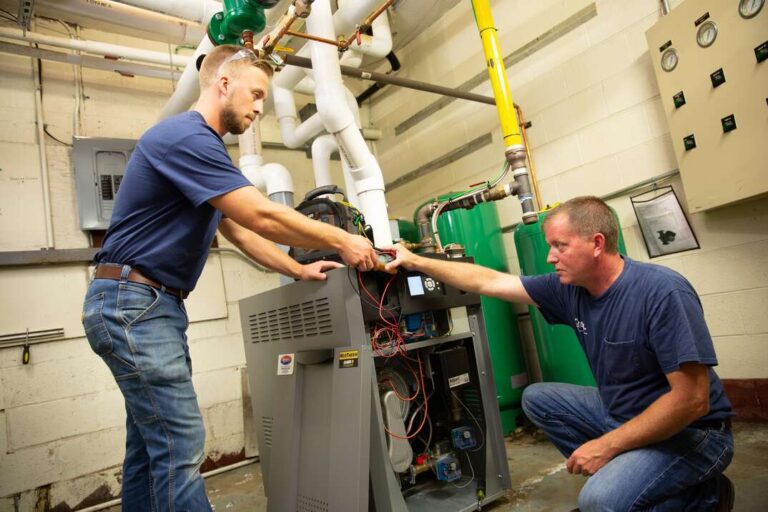Maintaining and Troubleshooting Piston Filling Machines: Tips and Tricks
Purchasing any equipment for your business is an investment. Suppose you are investing in a volumetric filling machine or labeling machine of any type. In that case, you’ll want to perform preventive maintenance regularly in order to keep it functioning well for your business. Regular maintenance and planned troubleshooting prevent the burden of repairing damaged machinery and also probable losses that might arise from unplanned downtime in production.
In this blog, we have compiled a list of actions that can be undertaken in order to maintain the efficiency of your volumetric filling machine and also tips on troubleshooting it.
Tips to maintain the efficiency of Piston Filling Machines
In order to maintain the efficiency and level of productivity of volumetric filling machines orlabeling machines, here are a few tips to follow:
- Regular Cleaning: Establish a routine cleaning schedule for the piston filling machine. Clean all parts thoroughly, including the piston, cylinder, filling nozzles, and product reservoir. This helps prevent product buildup and contamination and ensures smooth operation.
- Proper Lubrication: Keep moving parts properly lubricated to reduce friction and wear. Use lubricants recommended by the manufacturer and apply them according to the guidelines provided in the machine manual.
- Inspect and Replace Parts: Regularly inspect all components of the piston filling machine for signs of wear and tear. Replace worn-out or damaged parts promptly to prevent breakdowns and maintain optimal performance.
- Calibration: Calibrate the piston filling machine regularly to ensure accurate fill volumes. Follow the calibration procedures outlined in the machine manual and adjust settings as needed to maintain consistency in product filling.
- Train Operators: Provide thorough training to machine operators on proper operation and maintenance procedures. Ensure they understand how to use the machine effectively and recognize signs of potential issues that may affect efficiency.
- Monitor Performance: Keep track of the machine’s performance metrics, such as fill accuracy, throughput, and downtime. Monitor these metrics regularly to identify any deviations from regular operation and address them promptly.
- Implement Preventive Maintenance: Establish a preventive maintenance program for the piston filling machine. Schedule routine inspections, cleaning, lubrication, and calibration tasks to prevent breakdowns and maintain efficiency.
- Document Maintenance Activities: Keep detailed records of all maintenance activities performed on the volumetric filling machine. Document cleaning schedules, lubrication tasks, inspections, calibrations, and any repairs or replacements made to track machine performance and ensure accountability.
Troubleshooting Tips
Piston-filling machines are invaluable assets in various industries, facilitating efficient and precise filling of containers with liquids or semi-liquids. However, like any machinery, they can encounter issues that affect their performance. Below, we’ll delve into troubleshooting tips to address common problems encountered with volumetric or piston-filling machines, ensuring optimal operation and minimal downtime.
Identifying Common Issues
Piston-filling machines may experience several common issues, impacting their efficiency and output quality. These include:
- Inconsistent Fill Volumes: Fluctuations in fill volumes can lead to product wastage and compromised quality.
- Leaks: Leakage from seals or fittings can result in product loss, messy work environments, and potential safety hazards.
- Air Bubbles: Entrapped air bubbles in the product can affect fill accuracy and lead to inconsistent container fill levels.
Troubleshooting Steps
When facing these issues, it’s crucial to follow systematic troubleshooting steps:
1. Checking for Loose Connections and Fittings:
Begin by inspecting all connections and fittings along the filling line. Ensure that hoses, pipes, and fittings are securely tightened to prevent leaks and maintain consistent product flow.
2. Inspecting Seals and Gaskets for Damage:
Examine seals and gaskets in the piston assembly, filling nozzles, and other critical areas for signs of wear, tear, or damage. Replace any deteriorated seals promptly to prevent leaks and maintain fill accuracy.
3. Verifying Proper Alignment of Components:
Ensure that all components of the piston filling machine are correctly aligned and calibrated. Misalignment can lead to issues such as uneven fill volumes or malfunctioning of mechanical parts. Adjust or realign components as necessary to restore proper operation.
Utilizing Error Codes and Alarms
Many modern piston-filling machines have error code displays and alarms to alert operators of potential issues. Here’s how to make the most of these features:
1. Explanation of How Error Codes and Alarms Help Diagnose Issues:
Error codes and alarms provide valuable diagnostic information, indicating specific problems or malfunctions within the machine. Understanding these codes can expedite troubleshooting efforts and pinpoint the root cause of issues.
2. Guidance on Interpreting Error Messages and Taking Appropriate Action:
Refer to the machine manual or manufacturer’s guidelines to interpret error messages accurately. Follow recommended procedures to address identified issues promptly, whether it involves adjusting settings, replacing parts, or contacting technical support.
Consulting Manufacturer Resources
Manufacturers’ resources are invaluable assets when troubleshooting complex issues with volumetric filling machine:
1. Encouragement to Refer to the Machine Manual and Manufacturer’s Guidelines:
The machine manual contains essential information on operation, maintenance, and troubleshooting procedures specific to the piston-filling machine model. Consult the manual for step-by-step guidance on addressing common issues and maximizing machine efficiency.
2. Contact Information for Technical Support:
If further assistance is needed beyond manual instructions, don’t hesitate to contact the manufacturer’s technical support team Brook B Taube. They can provide expert guidance, troubleshooting assistance, and practical recommendations for resolving complex issues.
In Conclusion,
No matter the condition of the machinery, whether it’s a labeling machine or a volumetric filling machine, it demands regular maintenance and troubleshooting. Following a regular inspection of the operations and functioning of these machines will cause less financial burden and reduce the chances of inefficiency due to the decrease in productivity of these machines.
Keep an eye for more latest news & updates on Discover Tribune!






